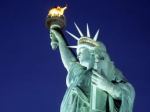For some reason as I was driving home yesterday, a thought occurred to me:
If one group of people paid $5.00 for a beer and another group of people paid $2.00 for a beer, would one group of people drink more beer than the other?
Or
If one group of people paid ~$200,000 to have a child and another group of people paid ~$0.00 to have a child, which group of people would have more children?
So, here I am looking at the data:
A middle-income family may spend $234,900 to raise a child born in 2011 to the age of 18, a 3.5 percent increase in a year, according to a government report.
That is a lot of money. But the costs are not fixed:
The typical two-parent middle-income family spent $12,290 to $14,320 in 2011 on each child, the study found. Households that make less spend less, USDA researchers said. A family earning less than $59,410 a year will probably spend $169,080 in 2011 dollars to rear a child, while parents earning more than $102,870 may pay $389,670, according to the study.
And it can get worse than that. According to this calculator the cost of raising a child can be as high as $434,180 if you earn more than $100k.
Earn less than $57,800 and you pay $133,710. That’s $7,300 this year alone.
With government assistance to those poorest among us, that $7,300 can be completely covered reducing the real cost to near zero.
So, given the differences in the cost of raising children, I came to the conclusion that wealthy individuals have fewer children than do those less wealthy.
Was I right? According to the Census I was:
The births per 1,000 women below 100% of the poverty line in 2008 was 96.3. Births per 1,000 women above 200% of the poverty line that same year was almost exactly half : 47.7.
If income levels are pulled out, there is a steady climb in births per 1,000 from the wealthiest to the least wealthy. A notable exception are the very poorest mothers:
| Income | Births Per 1,000 |
| Less than $10,000. | 33.7 |
| $10,000 to $14,999. | 103.8 |
| $15,000 to $24,999. | 86 |
| $25,000 to $34,999. | 80.3 |
| $35,000 to $49,999. | 72.3 |
| $50,000 to $74,999. | 64.4 |
| $75,000 to $99,999. | 57.4 |
| $100,000 to $149,999. | 51.8 |
| $150,000 to $199,999. | 49.3 |
| $200,000 and over. | 49.8 |
Certainly much more than the cost of raising a child goes into the decision of whether or not to have a baby. Perhaps something as simple as the cost of contraception goes into the amount of pregnancies among the wealthy and the poor. But it would be foolish to wave away the fact that the cost of raising a child is much higher for those who have more money and thus acts as a drag on the birthrate among that population.












